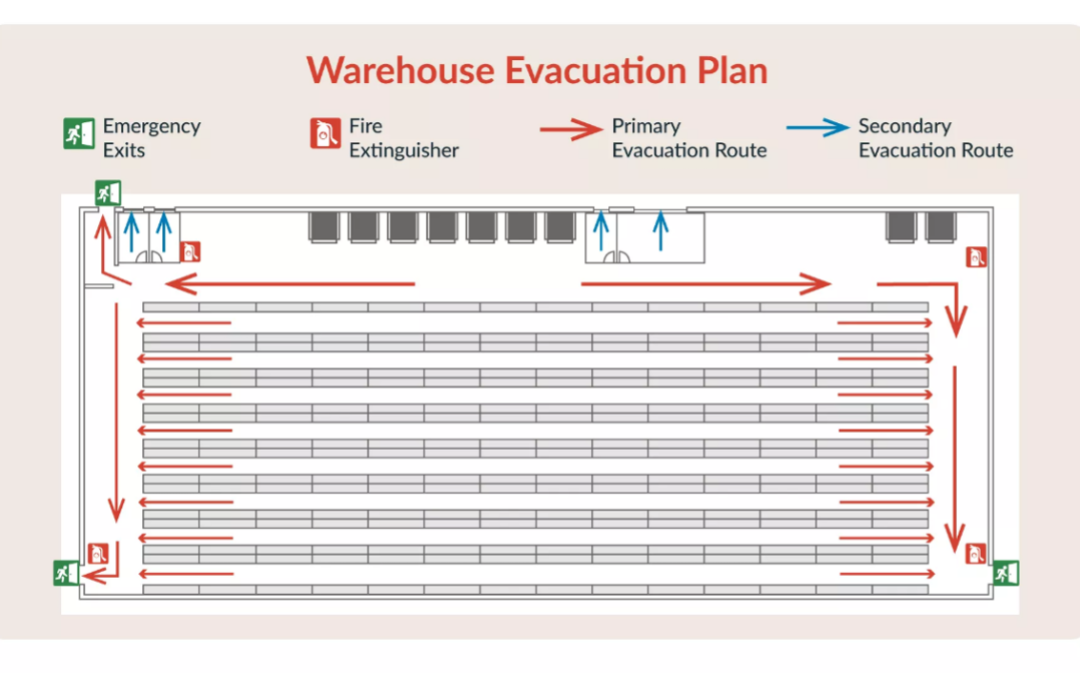The actions taken in the initial minutes of an emergency are critical. Prompt action and warnings can save lives, minimize physical damage to structures and property, and allow for better resilience. Every business should develop and implement an emergency plan for protecting employees, contractors, and visitors.
Developing an Emergency Plan
Developing an emergency plan begins with an understanding of what can happen. Consider the following actions when reviewing your risk assessment and considering the performance objectives that you established for your program.
- Assess what resources are available for incident stabilization. Consider internal resources and external resources, including public emergency services and contractors.
- Document available resources. Determine whether external resources have the information they would need to handle an emergency. If not, determine what information is required and be sure to document that information in your plan.
- Prepare emergency procedures for foreseeable hazards and threats.
Plans should define the most appropriate protective action for each hazard to ensure the safety of employees and others within the building.
- Determine how you will warn building occupants to take protective action.
- Develop protocols and procedures to alert first responders including public emergency services, trained employees, and management.
- Identify how you will communicate with management and employees during and following an emergency.
10 Steps for Developing the Emergency Response Plan
- Review performance objectives for the program.
- Review hazard or threat scenarios identified during the risk assessment.
- Assess the availability and capabilities of resources for incident stabilization including people, systems, and equipment available within your business and from external sources.
- Talk with public emergency services (e.g., fire, police, and emergency medical services) to determine their response time to your facility, knowledge of your facility and its hazards and their capabilities to stabilize an emergency at your facility.
- Determine if there are any regulations pertaining to emergency planning at your facility; address applicable regulations in the plan.
- Develop protective actions for life safety (evacuation, shelter, shelter-in-place, lockdown).
- Develop hazard and threat-specific emergency procedures using the Emergency Response Plan for Businesses.
- Coordinate emergency planning with public emergency services to stabilize incidents involving the hazards at your facility.
- Train personnel so they can fulfill their roles and responsibilities.
- Facilitate exercises to practice your plan.
Once you have completed your emergency action plan, review it carefully with your employees and post it in an area where all employees will have access to it.
The employer must review with each employee upon initial assignment those parts of the EAP and fire prevention plan (FPP) that the employee must know to protect him or herself in the event of an emergency. The written plans must be available to the employees and kept at the workplace. For employers with 10 or fewer employees, the plans may be communicated orally. [29 CFR 1910.38(b) and 29 CFR 1910.39(b)]
The plans should also be reviewed with other companies or employee groups in your building to ensure that your efforts will be coordinated with theirs, enhancing the effectiveness of your plan. In addition, if you rely on assistance from local emergency responders such as the fire department, local HAZMAT teams, or other outside responders, you may find it useful to review and coordinate your emergency plans with these organizations. This ensures that you are aware of the capabilities of these outside responders and that they know what you expect of them.
It is a good idea to hold practice evacuation drills. Evacuation drills permit employees to become familiar with the emergency procedures, their egress routes, and assembly locations, so that if an actual emergency should occur, they will respond properly.
Drills should be conducted as often as necessary to keep employees prepared. Include outside resources, such as fire and police departments, when possible. After each drill, gather management and employees to evaluate the effectiveness of the drill. Identify the strengths and weaknesses of your plan and work to improve it.
Evacuation Route Maps
Most employers create maps from floor diagrams with arrows that designate the exit route assignments. These maps should include locations of exits, assembly points, and equipment (such as fire extinguishers, first aid kits, spill kits) that may be needed in an emergency. Exit routes should be:
- Clearly marked and well lit.
- Wide enough to accommodate the number of evacuating personnel.
- Unobstructed and clear of debris at all times.
- Unlikely to expose evacuating personnel to additional hazards.
- For more information on exit routes, required height and widths, door access and hinges, see Design and Construction Requirements for Exit Routes.
Operations and personnel change frequently, and an outdated plan will be of little use in an emergency. You should review the contents of your plan regularly and update it whenever an employee’s emergency actions or responsibilities change, or when there is a change in the layout or design of the facility, new equipment, hazardous materials, or processes are introduced that affect evacuation routes, or new types of hazards are introduced that require special actions.
The most common outdated item in plans is the facility and agency contact information. Consider placing this important information on a separate page in the front of the plan so that it can be readily updated. Be sure to include a date of review at the bottom of the document to know when to update.
Spencer-SHE has been providing Safety, Health, and Environmental Compliance Guidance since 1980. Our team can review and update your plans and assist with the documentation of drills.
Contact us here to help you to develop and maintain a safe and healthy workforce.
Sources:
https://www.alertmedia.com/blog/emergency-drills/
https://www.ready.gov/business/emergency-plans/emergency-response-plan
https://www.osha.gov/etools/evacuation-plans-procedures/eap/develop-implement

